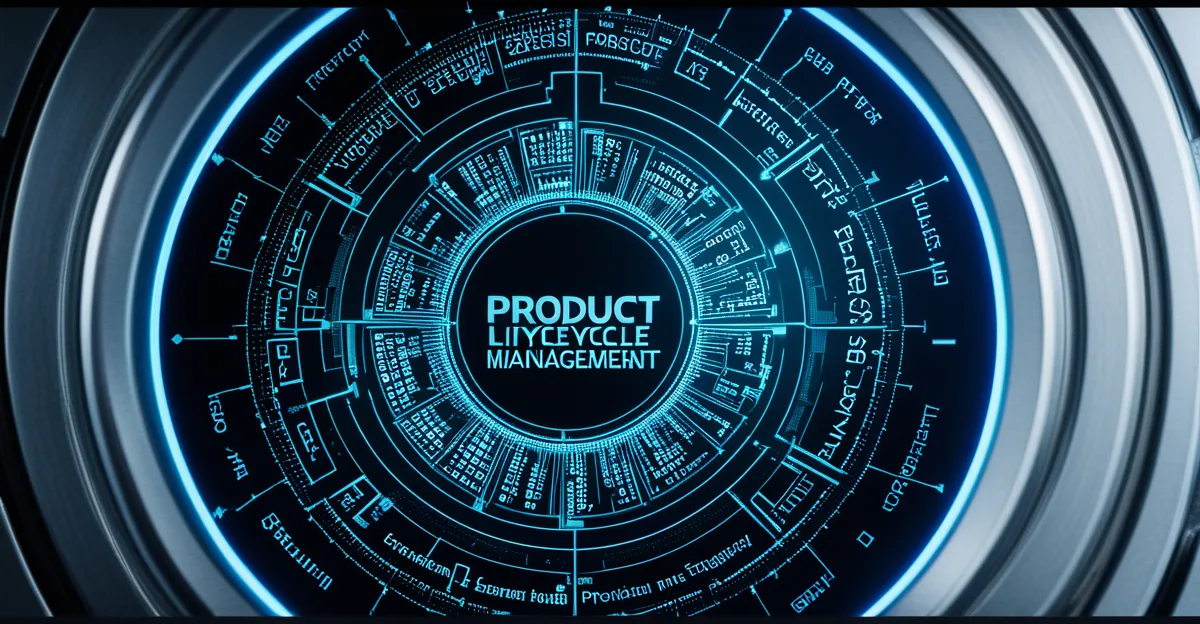Effective cybersecurity depends on managing a product’s entire lifecycle—from design to retirement. Product Lifecycle Management (PLM) integrates processes and data across teams, reducing vulnerabilities by ensuring consistent security measures at every stage. By centralizing information and fostering collaboration, PLM not only accelerates development but also strengthens protection against evolving cyber threats.
Comprehensive guide to Product Lifecycle Management: definition, stages, benefits, and cybersecurity integration
You can view more details on this page: Click to discover
Also read : Strengthening cybersecurity through effective product lifecycle management
Product Lifecycle Management (PLM) is a discipline that coordinates the people, processes, and technologies required to guide a product from its initial concept through its eventual retirement. Emerging from early frameworks in the 20th century, PLM today combines product lifecycle software solutions with workflow digitization to streamline collaboration—from research and design through manufacturing, marketing, and support. Its modern scope covers not only technical documentation and change management, but also real-time product lifecycle analytics and integrations across supply chain and business systems.
The key PLM stages are design and development (conceptualization, prototyping, validation), manufacturing (procurement, quality assurance, production), and distribution (inventory management, launch, logistics). Each phase uses specialized PLM functionalities like centralized data repositories, project tracking, and digital mock-ups to accelerate time-to-market and maintain compliance.
In parallel : How Can the UK Maintain Its Leadership in Computing and High-Tech?
Adopting PLM brings tangible gains: improved cross-functional teamwork, increased efficiency, faster issue detection, and the ability to respond dynamically to changes or customer feedback. However, the shift to PLM presents challenges, such as integrating legacy systems and overcoming data silos. Recent trends in PLM further emphasize cybersecurity; secure data management and supply chain transparency are now foundational, ensuring products remain resilient against evolving digital threats throughout their lifecycle.
Key components and processes within PLM systems
Essential PLM functionalities: data management, process automation, and collaboration tools
PLM tools and applications are designed to centralize all product data, automate complex workflows, and support real-time collaboration. Managing product data with PDM ensures information integrity—critical for tracking revisions, engineering changes, and documentation updates. Automated approval workflows and change control enable organizations to adapt quickly, reducing errors and costly delays. Integrated collaborative lifecycle management platforms connect teams across design, engineering, and manufacturing, fostering better communication and visibility.
Integrating PLM with other enterprise systems (ERP, SCM, CRM) for seamless operations
Effective PLM system integration unifies product lifecycle data with ERP, SCM, and CRM platforms. This integration delivers a holistic view—from design to delivery—eliminating redundancy and ensuring that departments share up-to-date product information. Businesses can streamline manufacturing schedules, procurement planning, and supply chain management. Product lifecycle cost control becomes more transparent, empowering leadership to make informed decisions quickly.
Incorporating agile and cloud-based approaches in lifecycle management
Agile PLM frameworks foster adaptability by supporting iterative development and continuous feedback throughout the product lifecycle. Cloud-based lifecycle management enables secure, scalable access to PLM software examples across distributed teams. These advances lower IT complexity and support rapid deployment of updates, ideal for organizations with dynamic requirements. By empowering users, PLM tools and applications optimize both innovation and operational resilience, reinforcing a data-driven product lifecycle strategy.
Enhancing cybersecurity and compliance throughout the product lifecycle
Proactive security integration from product design to retirement
Product lifecycle risk management starts at the earliest design phase. By embedding plm platform security features directly in workflows, organizations ensure that products are protected against cyber threats from inception through disposal. Throughout each lifecycle stage, these plm platform security features automate compliance checks and enforce policies, reducing human error and oversight. In the context of ongoing digital transformation in product management, security requirements evolve alongside new technologies, making it essential that security standards and automated controls are updated regularly.
Ensuring traceability and regulatory compliance using PLM
PLM software for engineering teams gives businesses real-time control over changes, documentation, and approval workflows. This level of control makes tracking critical updates straightforward, assisting organizations in demonstrating regulatory compliance. With product lifecycle analytics, companies access a clear audit trail of decisions and alterations, supporting faster, more accurate responses to audits or incident investigations.
Addressing supply chain vulnerabilities and third-party risk with PLM visibility
Supply chain lifecycle management relies on transparent processes powered by integrated PLM systems. These platforms highlight dependencies on third-party suppliers while leveraging robust product lifecycle risk management methodologies. SAP integration with PLM further enables seamless data flow across departments, ensuring vulnerabilities are identified and managed early in the lifecycle, which is crucial for sustaining production efficiency and resilience.
Industry applications, trends, and best practices for robust PLM implementation
Real-world PLM use cases across manufacturing and technology sectors
The Stanford Question Answering Dataset (SQuAD) method pinpoints the main real-world impact of enterprise PLM software solutions: facilitating collaboration, standardizing processes, and enabling rapid, agile product lifecycle management. In manufacturing, the best PLM platforms for manufacturing empower cross-functional teams to manage product data, automate change requests, and streamline workflows. Technology-intensive sectors rely on a refined plm software vendors list to select adaptable solutions that can evolve with shifting requirements.
PLM training and certification benefits span the workforce—upskilling employees while embedding best practices. Notably, product lifecycle improvements with PLM are evident in sectors like automotive, electronics, and aerospace, where integration ensures regulatory compliance, quality management, and quicker delivery cycles.
Current market trends: AI, IoT, and digital twin integration in PLM
Agile product lifecycle management now often leverages AI and digital twins for predictive analytics, optimizing new product development lifecycle strategies. Enterprise PLM software solutions that integrate IoT enable manufacturers to track usage patterns and enhance maintenance planning. The focus is increasingly on product innovation and lifecycle management by using real-time data across supply chains.
PLM implementation best practices: training, collaboration, and continuous improvement
Best practices include focused plm training and certification benefits, organization-wide collaboration, and continuous process reviews driven by actionable data. Companies investing in the best PLM platforms for manufacturing create sustainable competitive advantages, positioning themselves to adapt and thrive.







